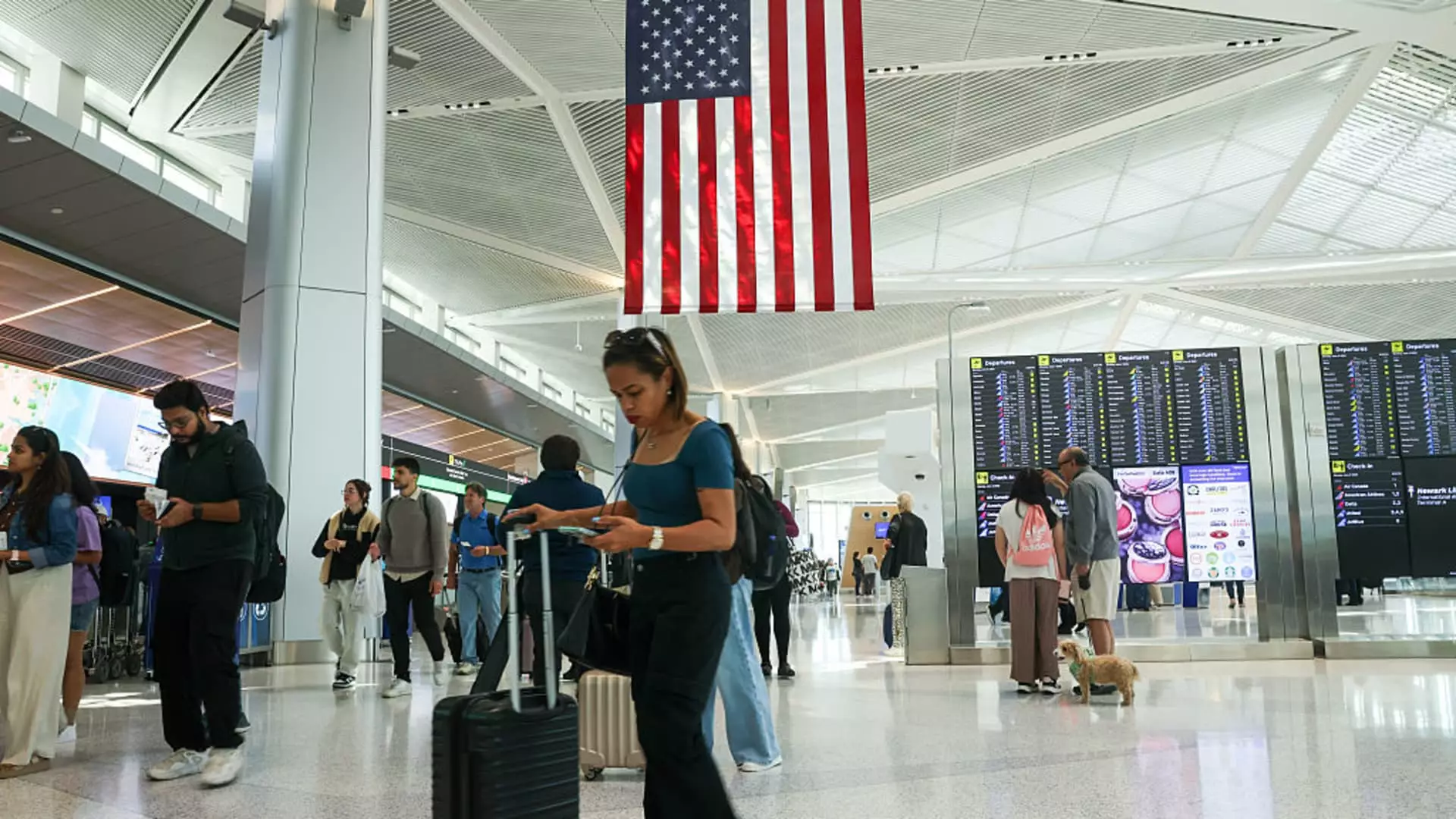For years, the narrative around the airline industry has been one of resilience and growth. Yet, beneath the surface of record-breaking airport crowds and seemingly vigorous summer travel numbers lies a fragile economy teetering on the edge of uncertainty. While millions of Americans take to the skies in celebration of independence, airlines grapple with a stark reality: an industry that appears to be teetering on the brink of instability, even amid peak travel periods. The apparent buzz of busy airports and decreasing fares are not indicators of health, but rather, symptomatic of an industry desperate to keep pace with dwindling demand and mounting economic headwinds.
The summer travel boom, often heralded as a sign of recovery, masks the unsettling truth. Airlines are discounting fares, not because of overwhelming demand, but because they are desperately attempting to fill seats in an environment where travel appetite is waning. Fares have fallen to their lowest levels since 2021, indicating that the industry is offering discounts not to stimulate growth, but to stave off collapse under the weight of excess capacity. When the CEO of Southwest Airlines boldly claims “the summer is on sale,” one must question whether this insipid optimism is a genuine sign of strength or a cover-up for deeper structural issues.
Economic Shadows Cast Over Consumer Spending and Travel
Despite seemingly healthy statistics, the industry’s worries are unmistakably evident in consumer behavior and economic indicators. Credit and debit card data reveal a disturbing trend: an 11.8% decline in airline-related spending last month compared to last year. This decline consolidates fears that the consumer’s willingness—and ability—to spend on travel is diminishing. A decline in discretionary spending of such magnitude suggests that travelers, particularly in a post-pandemic world where economic uncertainties persist, are increasingly cautious.
The broader labor market presents a paradox. Even as jobs remain resilient, the cautious consumer is pulling back. This disconnect signals an economy that, while resilient outwardly, is increasingly vulnerable internally. Airlines, which profoundly depend on consumer confidence and economic stability for profits, are likely to face a dreary second half of the year. The fact that major carriers have pulled their forecasts for 2025 underscores just how fragile their outlook has become. Their hesitation points to an industry navigating a veritable minefield of tariffs, geopolitical tensions, and waning international visitors—factors that threaten to erode profits further.
The International Sector: A Mixed Bag of Opportunities and Challenges
One bright spot in this bleak landscape is international travel. For the U.S., overseas trips have remained relatively resilient, especially to Europe, where fares have dropped to levels comparable to pre-pandemic years. However, this supposed boon is deceptive; declining fares internationally reveal a global industry suffering from oversupply and reduced demand. International carriers face their own seasonal pressures, with demand not robust enough to sustain higher prices. The $817 average fare to Europe is good for consumers but signals a market cautiously adjusting to the new normal—one in which lower prices are the only way to attract travelers.
The Asian market, traditionally a growth driver, is also experiencing downward pressure with fares dropping 13%. This is a clear indication that even large, emerging markets are feeling the pinch. While international travel remains a critical element of the industry’s revenue, the overall picture suggests that the global economy’s troubles are cascading onto airline profitability—particularly when airlines are forced to lower prices just to keep passenger volume steady.
The Coming Storm: A Structural Shift or a Temporary Downturn?
The manner in which airlines are responding—cutting unprofitable flights, delaying expansion, and pulling forecasts—points to a looming restructuring. What appears to be a temporary slowdown could very well evolve into a fundamental rethink of how airlines operate in an era of economic volatility. Analyst forecasts highlight the uncertainty: no clear signs of demand rebounding strongly in the second half, and a cautious expectation that capacity cuts could be viewed positively—meaning industry insiders are already adjusting their expectations downward.
This impending shift underscores a critical lesson: the airline industry cannot rely solely on short-term demand surges or seasonal boosts to sustain profitability. The economic uncertainties brought about by geopolitical tensions, inflation, and changing consumer habits have created a new normal—one where high-flying optimism is replaced by cautious pragmatism. We are likely witnessing the quiet before a significant realignment, where airlines must adapt to a world in which demand remains tepid, competition is fiercer, and profitability is more elusive than ever.

